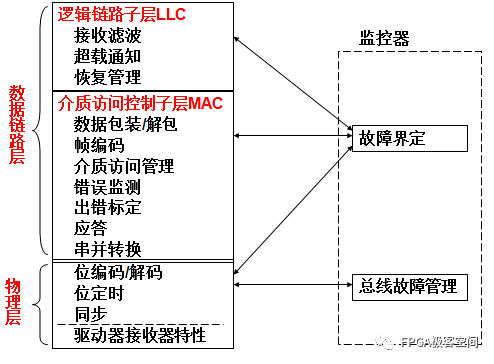
I know that I am fascinated by everything related to electronics, but from any point of view, today's field-programmable gate arrays (FPGAs) are all "outstanding" and really great devices. If in this era of intelligence, in this field, you want to have a skill, you have not paid attention to FPGA, then the world will abandon you, the era will abandon you.
CAN is a serial communication protocol that effectively supports distributed real-time control with a high level of security. CAN has a wide range of applications, from high-speed networks to low-cost multi-wires. In the automotive electronics industry, CAN is used to connect engine control units, sensors, anti-brake systems, etc., with transmission speeds up to 1 Mbit/s. At the same time, CAN can be installed in the electronic control system of the truck body, such as a lamp group, an electric window, etc., instead of the wiring wiring device.
The purpose of the technical specifications is to establish compatibility between any two CAN instruments. However, compatibility has different aspects, such as electrical characteristics and interpretation of data conversion. To achieve design transparency and flexibility, the CAN 2.0 specification is subdivided into the following different layers according to the ISO/OSI reference model: the data link layer and the physical layer (as shown).

CAN protocol hierarchy and function
The scope of the Logical Link Control Sublayer (LLC) is as follows:
Serving remote data requests and data transfers.
Determine which message is received by the LLC sublayer that is actually to be used.
Provides tools for recovery management and overload notifications.
The role of the MAC sublayer is mainly the transmission rules, that is, the control frame structure, execution arbitration, error detection, error calibration, and fault definition. Some common functions of bit timing can also be considered as part of the MAC sublayer.
The role of the physical layer is to actually transfer bits between different nodes based on all electrical properties.
CAN has the following properties:
Message priority
Guaranteed delay time
Flexible setting
Time-synchronized multipoint reception
Coherence of data within the system
Multi-host
Error detection and error calibration
As soon as the bus is idle, the corrupted message is automatically retransmitted
The temporary and permanent errors of the node are distinguished, and the erroneous nodes of the layered CAN structure by the OSI reference model can be automatically closed.
The layer structure according to the ISO/OSI reference model has the following functions:
The physical layer defines how the signal is actually transmitted, thus involving interpretation of bit time, bit coding, synchronization. The technical specifications do not define the driver/receiver characteristics of the physical layer to allow for optimization of the transmit media and signal levels based on their application.
The MAC sublayer is the core of the CAN protocol. It provides the received message to the LLC sublayer and receives the message from the LLC sublayer. The MAC sublayer is responsible for message framing, arbitration, response, error detection, and calibration. The MAC sublayer is also referred to as a fault-defined management entity. This fault is defined as a self-test mechanism to distinguish between permanent faults and short-term disturbances.
The LLC sublayer involves message filtering, overload notification, and recovery management.
Indoor Rental Led Display,Indoor Rental Led Screen,Indoor Led Screen Hire,Indoor Led Screen Rental
ShenZhen Megagem Tech Co.,Ltd , https://www.megleddisplay.com